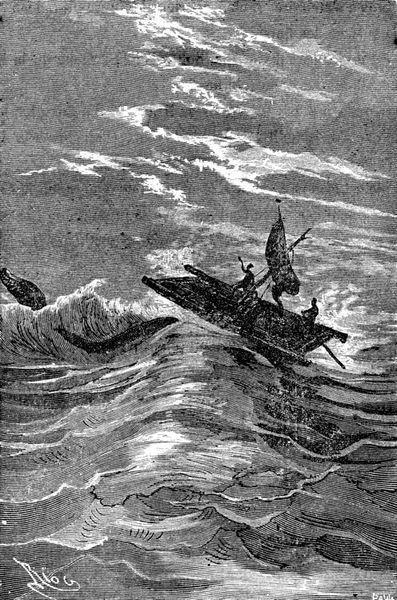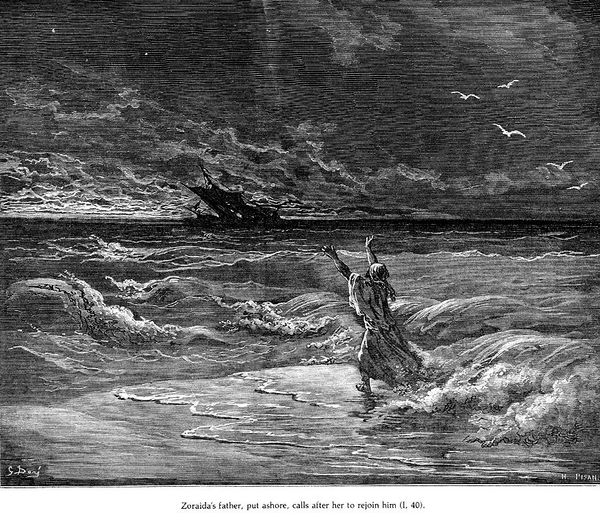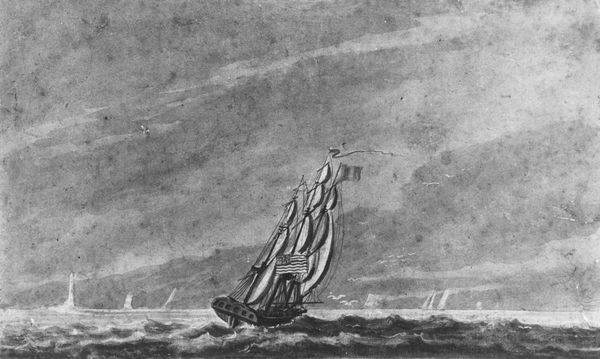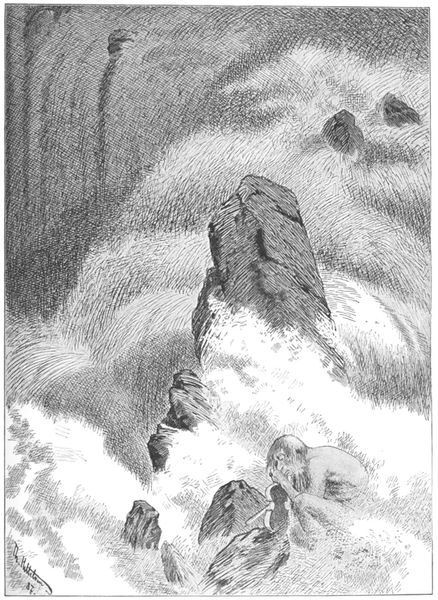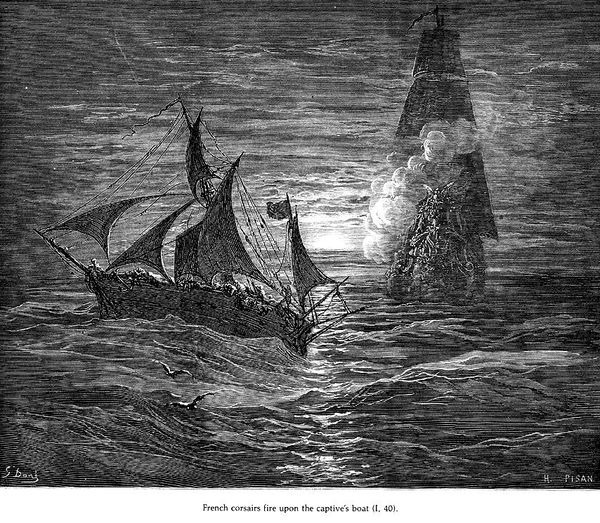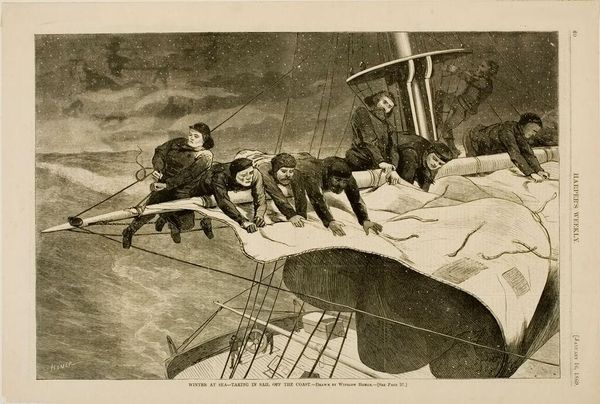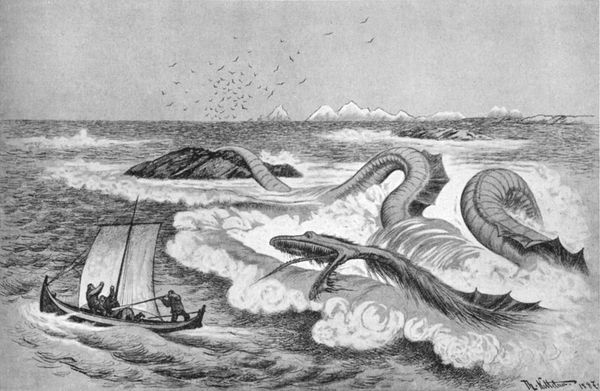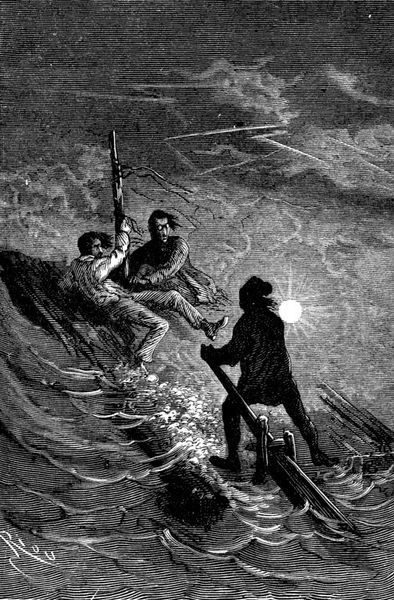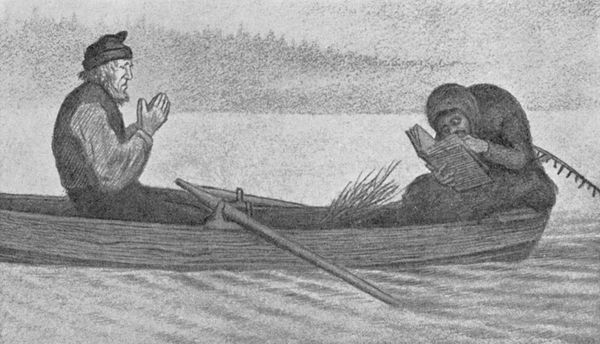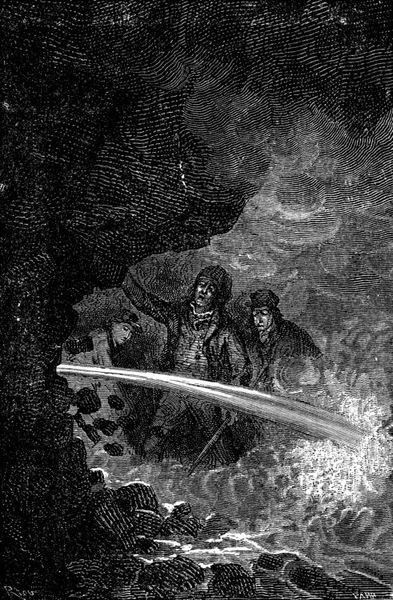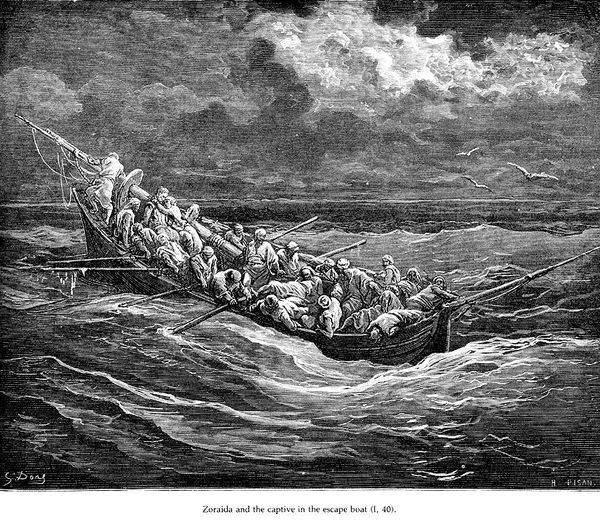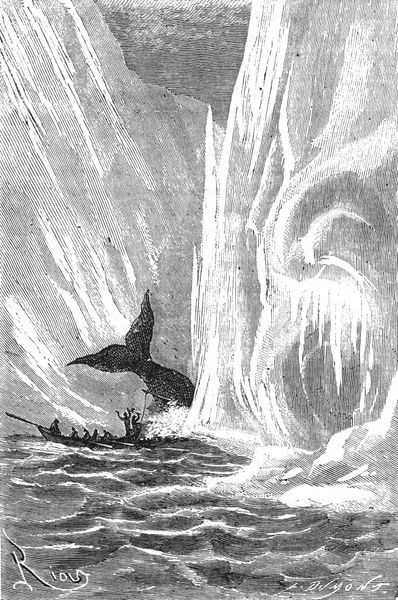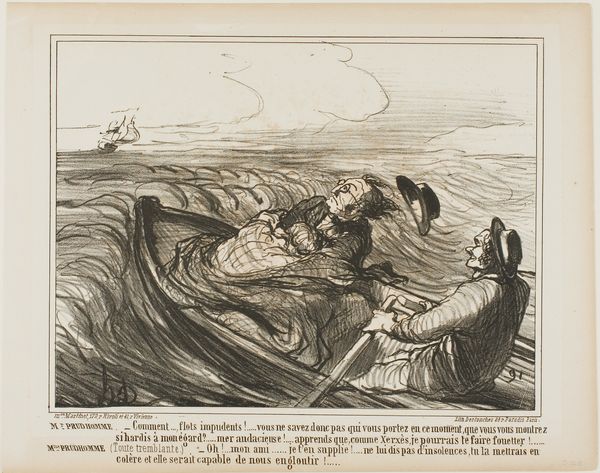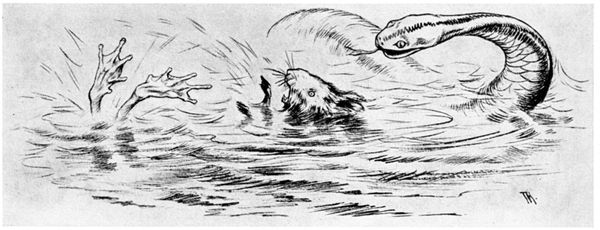
Copyright: Public domain
Curator: Okay, immediately, that water looks absolutely treacherous! Churning, violent, the crosshatching making me feel seasick just looking at it. Editor: Indeed. We’re looking at Theodor Kittelsen’s drawing, “Peer Gynt 06”, created in 1890 using ink on paper. It’s part of a series illustrating Ibsen’s play. Curator: I see that now! It captures that darkly Romantic mood perfectly. The bearded figure clinging to what looks like wreckage, with a… a skeletal figure next to him? Is that Death? Editor: More likely a representation of drowning or impending doom, I suspect. Remember, Kittelsen was deeply concerned with folklore and national identity, responding to Norway’s push for independence from Sweden at this time. These images lent cultural prestige to those movements. Curator: So this isn't just about Peer's journey, but Norway's struggles as well? Interesting. I’m so drawn to the older figure, though. The details in his face, the worry in his eyes. It’s intensely personal amidst all this chaos. It's not as cleanly illustrative as one might expect, which is good. Editor: Absolutely, Kittelsen's loose style creates a tangible sense of fear. The composition emphasizes the figure's isolation in a harsh environment. That technique really heightened awareness about how natural disasters impacted different communities during the nineteenth century. This rendering evokes not just fear of literal storms at sea but turbulent political environments for emerging nations like Norway struggling towards independence. Curator: A visual representation of those tempestuous forces threatening national identity, it seems. I love the way Kittelsen's drawing style conveys so much depth of feeling despite the lack of color. Editor: And it showcases the artist’s vision connecting those broader sociopolitical questions around nation-building and the individual's inner journey. Kittelsen presents a bleak but necessary truth: identity arises out conflict. Curator: Well, after looking a bit closer at Kittelsen’s visual story of the struggles around us, I’m convinced art becomes truly transformative when a viewer personally experiences an artwork instead of passively admiring it from afar. Editor: Agreed, which makes us value work in museums today and encourages us, and Kittelsen to consider what’s important.
Comments
No comments
Be the first to comment and join the conversation on the ultimate creative platform.
